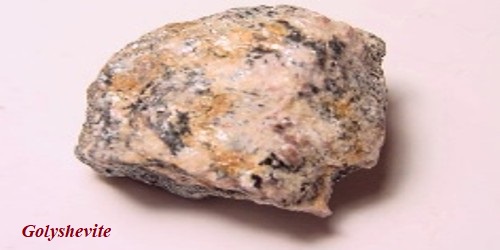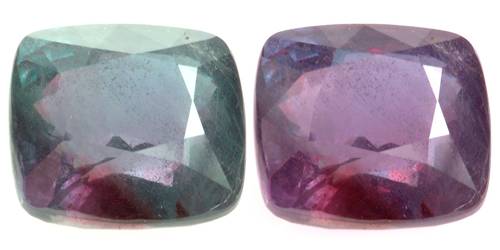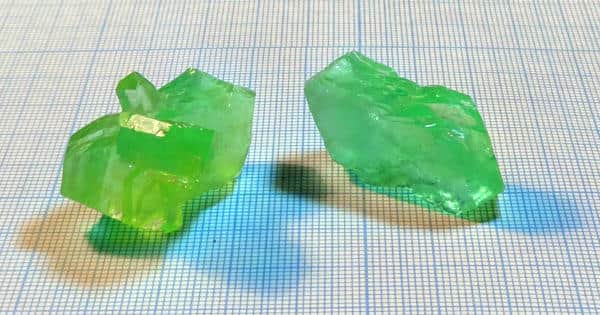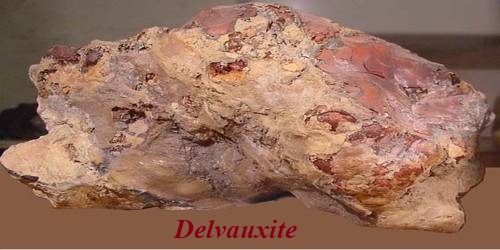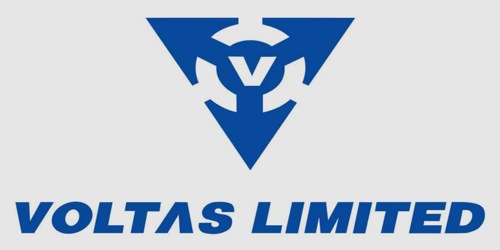Golyshevite is a rare mineral of the eudialyte group, with formula Na10Ca3Ca6Zr3Fe2SiNb(Si3O9)2(Si9O27)2CO3(OH)3•H2O. It was named for Russian crystallographer Vladimir Mikhailovich Golyshev of the Mordvinian State University in Saransk, Russia. The original formula was extended to show both the presence of cyclic silicate groups and silicon at the M4 site, according to the nomenclature of the eudialyte group.
It occurs only at the type locality in the calcium-rich peralkaline Kovdor Phlogopite mine in the Kovdor massif in the Kola Peninsula, Russia.
General Information
- Category: Silicate mineral, Cyclosilicate
- Formula: Na10Ca3Ca6Zr3Fe2SiNb(Si3O9)2(Si9O27)2CO3(OH)3H2O
- Crystal system: Trigonal
- Crystal class: Ditrigonal pyramidal (3m) (same H-M symbol)
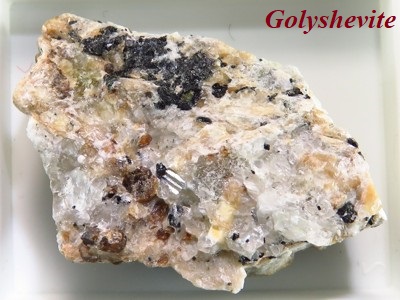
Properties
The characteristic feature of golyshevite is calcium-rich composition, with calcium at two main sites instead of one site. Together with feklichevite, fengchengite, ikranite and mogovidite it is a ferric-iron-dominant representative of the group.
- Color: Brown to reddish-brown
- Crystal habit: grains and crystals
- Cleavage: No
- Tenacity: Brittle
- Density: 2.89 (measured)
- Optical properties: Uniaxial (-)
- Pleochroism: green to pale yellow
Occurrence and association
Golyshevite and mogovidite were found in calcium-bearing peralkaline pegmatites of the Kovdor massif, Kola Peninsula, Russia. Minerals associated with golyshevite are aegirine-augite, calcite, cancrinite, hedenbergite, orthoclase, pectolite, tacharanite, and thomsonite-Ca.
It is associated with cancrinite, aegirine-augite, hedenbergite, orthoclase, pectolite, thomsonite-Ca, tacharanite, and calcite. Appears as reddish-brown grains, and rarely as crystals.
Information Source:
